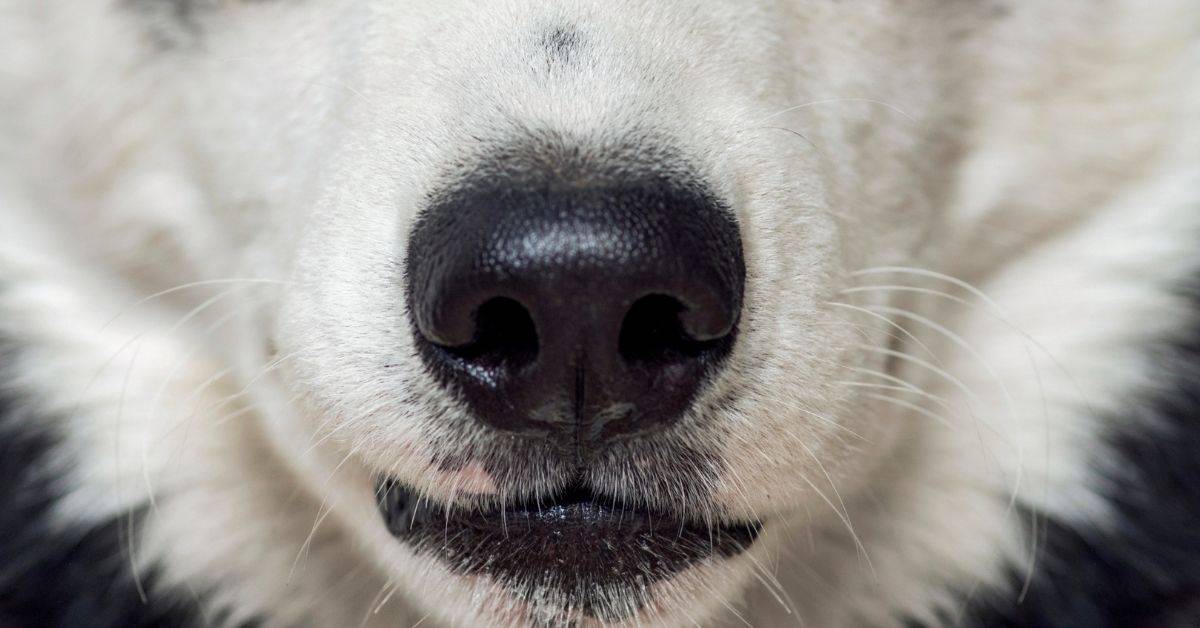Did you know that dogs have an incredibly powerful sense of smell?
It’s no wonder why these loyal and lovable animals have made such great companions over the years.
Their incredible olfactory prowess gives them a special superpower.
In this article, we dive into 14 fun facts about a dog’s sense of smell and how they utilize it in their everyday lives.
So if you want to learn more about your pup and get insight into why they act the way they do when presented with certain smells, watch on.
Dogs Have About 220 Million Scent Receptors In Their Noses, Compared To Humans Who Have 5 Million
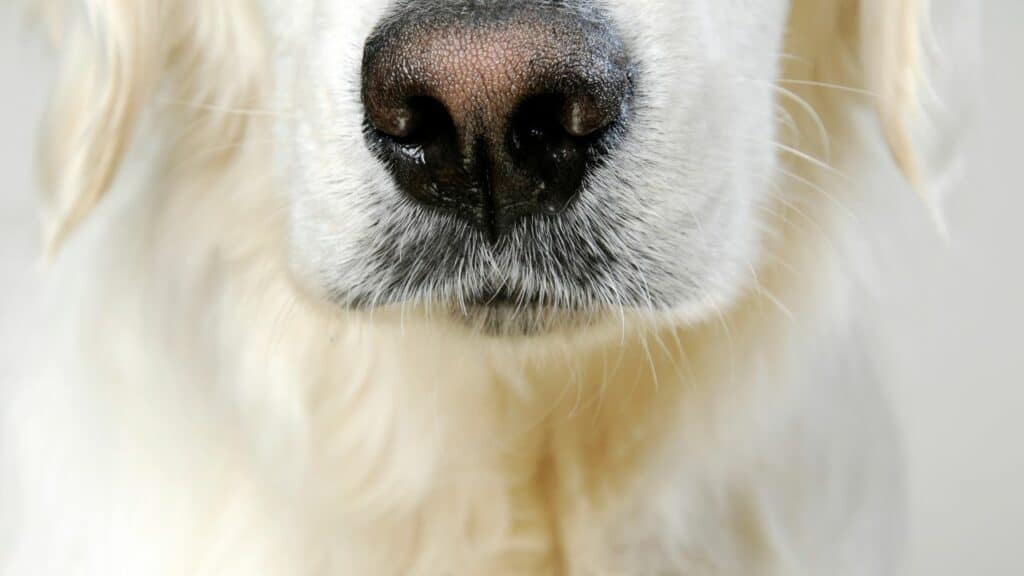
Dogs have an incredibly powerful sense of smell, far greater than humans.
Their noses are equipped with about 220 million scent receptors, compared to humans who only have 5 million.
This allows them to notice anything from subtle changes in the air.
Than can be tiny particles of sweat or even more specific smells like identifying a person by their exact scent.
Not only can they smell up to 100,000 times better than humans, but their brains can also process smells much faster and better than ours.
The special anatomy of a canine’s nose allows them to accurately detect patterns in different odors more rapidly and easily than we can.
Utilizing these abilities effectively is particularly important in police work and tracking where dogs can be used as a reliable source of detection.
Dogs Can Tell The Difference Between Identical Twins Based On Their Scent
One of the most interesting aspects of scent recognition in dogs is that they are able to distinguish between identical twins.
This has been demonstrated through a series of experiments where dogs can correctly select one twin from a group with only guidance from their sense of smell.
The exact method by which dogs can achieve this is still unknown, but it shows an almost unbelievable level of accuracy in their abilities.
Not only does it give insight into dog behavior and communication.
It is also a very useful tool for scientists studying mammalian behavior and cognitive functions.
Male Dogs Tend To Be Better At Detecting Smells Than Female Dogs
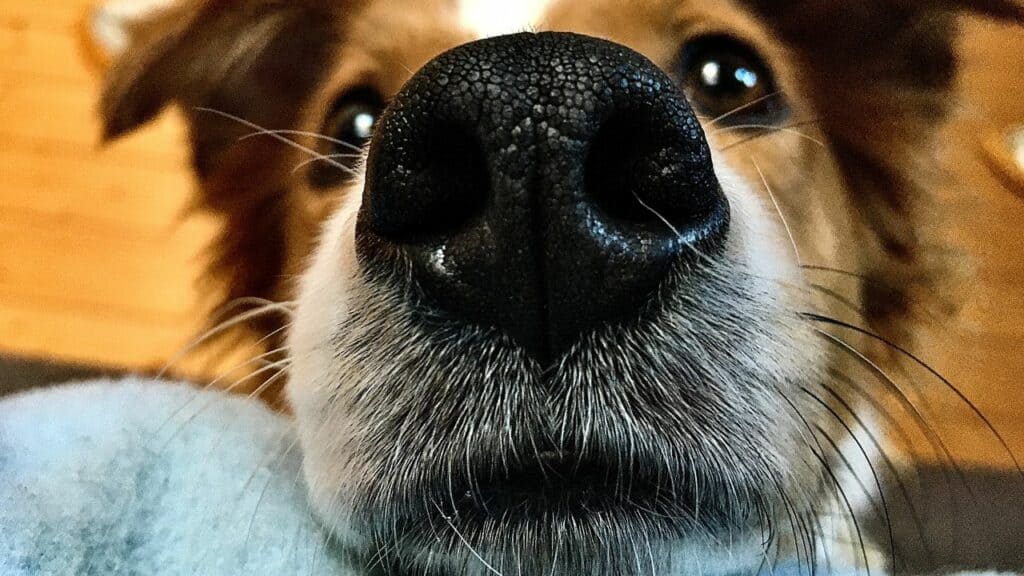
Male dogs have a distinct advantage when it comes to detecting smells.
With their sense of smell up to twice as strong as female dogs, males have the ability to pick up on subtle scents that females may miss.
This could make all the difference in tracking down an animal or locating someone who has gone missing.
Male dogs can also sense if food has gone bad more quickly than females.
Researchers believe that the extra sensitivity has something to do with larger olfactory lobes, part of a dog’s brain responsible for analyzing smells.
All these abilities make male dogs well-suited for activities such as working in search and rescue and pest extermination operations, where sharp noses are vital.
In general, there are more differences between female and male dogs than you might guess.
A Dog’s Sense Of Smell Is Strongest When He Is Wet
No, we don’t talk about that dog’s smell is bad when they are vet.
We talk about their sense of smell when a dog is wet.
It is commonly thought that because they have wet noses, they will be able to sniff out scents with greater accuracy.
Additionally, water on their nose absorbs scent particles and amplifies aromas, conveying them to the olfactory nerve more efficiently than a dry nose.
Dogs were better at locating and identifying odours when their noses were coated in water.
Dogs can smell some elements from farther away than humans due to their increased wetness and large number of sensory cells.
The lesson?
Always keep your pup hydrated for maximum odor detection!
Puppies Lose Their Sense Of Smell When They Are Around 4-6 Weeks Old
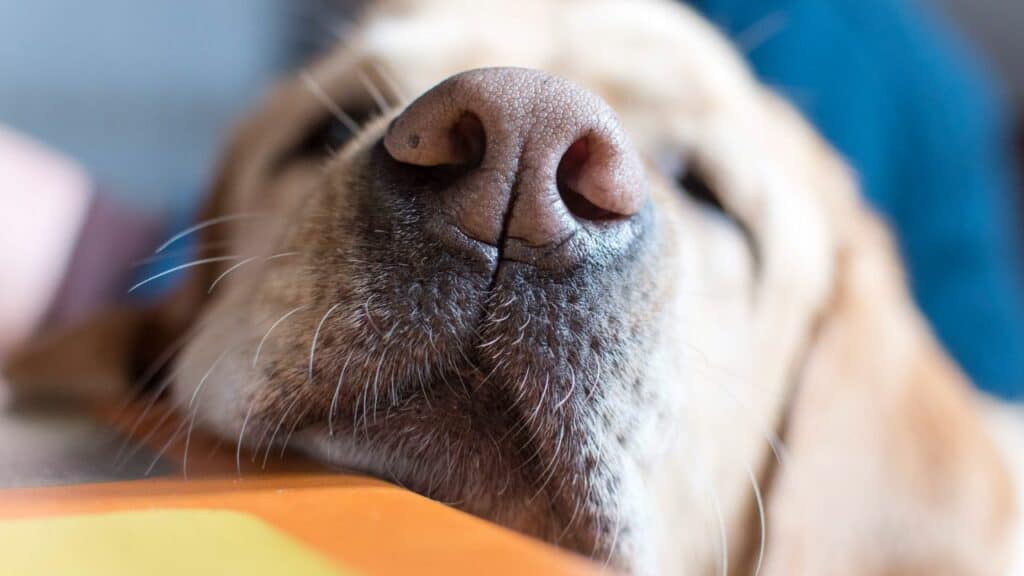
Most pet owners are familiar with the adorable, soft fur and puppy-like enthusiasm that comes with a new pup at home.
What they may not know, however, is that it is also an important time in terms of development.
During the period between 4-6 weeks of age, puppies learn to adapt to their environment through sight and sound.
Even experiencing fear for the first time.
But simultaneously lose their sense of smell.
This process helps them to better focus on taking in more visual and auditory cues for learning about the world around them.
Although temporary, this decrease in smell will typically only last for a few weeks until the scent glands begin to mature and puppies can take in more scents from their ever-expanding surroundings.
Dogs Can Smell Things That Are Far Away And Buried Underground
Dogs can follow their noses to find things that are miles away or even buried deep in the ground.
They have thousands of cells in their noses that are ready to pick up different smells, and it is thought that a dog’s sense of smell is about 10,000 times stronger than a human’s.
If you ever want to find something lost, a dog would be your best bet.
Dogs Can Smell Cancer And Other Diseases
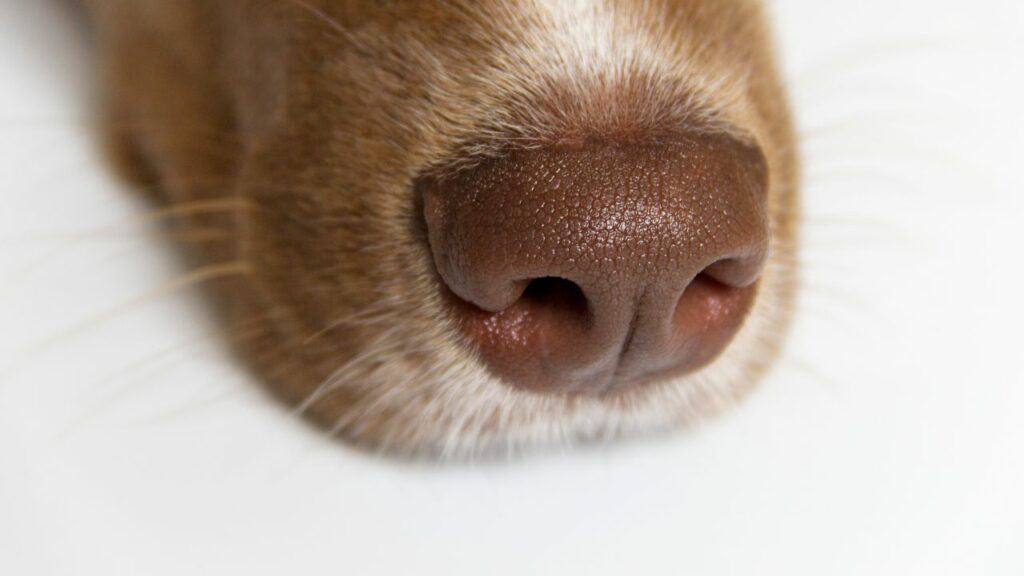
This skill has been harnessed to detect a number of diseases, specifically cancer.
By teaching dogs to recognize the smell of illnesses that can be diagnosed, they can be used as useful tools for doctors.
Clinical studies have shown that specially trained dogs can find cancer cells more than 90% of the time. This has led researchers to think that cancerous cells give off a smell that can be easily identified.
This has made it possible to use these furry friends to find many major diseases early on, giving people the best chance of survival.
Dogs Can Smell Fear And Anxiety In Humans
The heightened sense is so precise that dogs have the ability to detect fear and anxiety in their human companions.
Studies have found that dogs can identify subtle scents that are released when a person is feeling anxious.
This is giving them the ability to offer emotional and comforting support when their owner needs it most.
This invaluable connection helps explain the strong bond between humans and their furry friends – after all, no one understands us like our canine companions!
Dogs Use Their Sense Of Smell To Communicate With Each Other

Dogs are always fascinating creatures, and their capabilities to communicate never cease to amaze us.
A major part of canine communication takes place through scent, allowing them to exchange information related to social hierarchies, reproduction, warnings and even familiar elements in the environment.
Furthermore, different odors can be used by dogs to express things such as aggression and fear even from a distance.
By using their noses for so many matters, it is safe to say that for dogs smell really is worth a thousand words.
Senior Dogs May Not Be Able To Detect Smells As Well As Younger Dogs, But They Often Have A Better Sense Of Taste
Senior dogs may not have the same keen sense of smell as their younger counterparts, but that doesn’t mean they’re not just as capable.
In fact, senior dogs are known to have a better sense of taste thanks to their more piqued senses of sight and sound.
This means you can trust your older pup to pick out the best-tasting treats in your cupboard.
Moreover, they won’t jump ship when variety is added to their diet, unlike their younger relatives who tend to be more finicky with food offerings.
So if you’ve ever wondered why your senior pup seems so adamant about choosing certain meals over others – it’s because their mastery of sensing taste has them searching for the most delicious dish!
Dogs Will Often “Scent Mark” Objects By Peeing On Them To Claim Them As Their Own
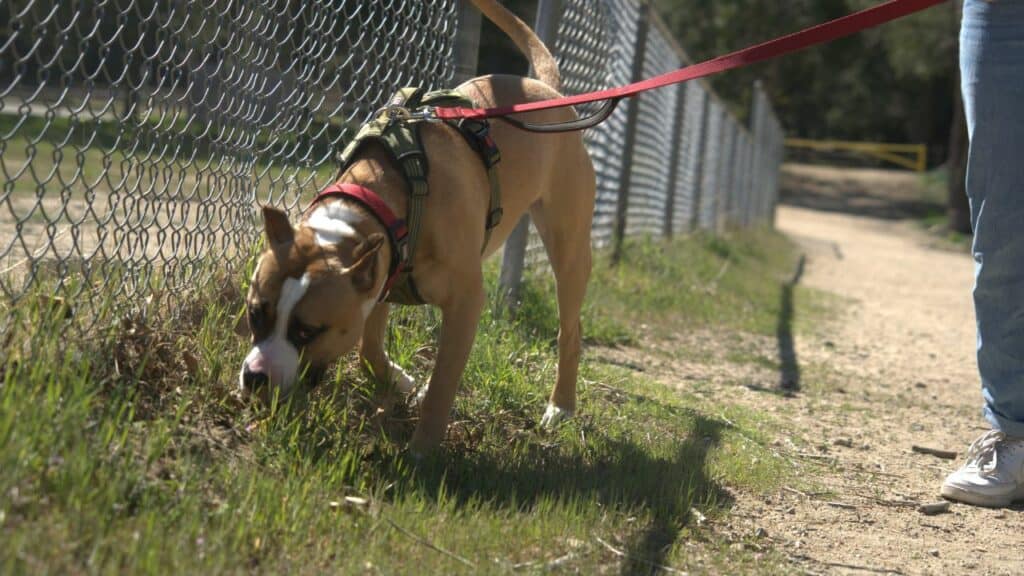
It’s natural for dogs to mark their territory with bodily secretions like urine and feces in order to signal presence and ownership.
This behavior is called scent marking, and usually occurs when a dog smells something interesting, whether it be within the house or outside.
While female dogs typically raise a leg while marking their scent, male dogs are more likely to urinate on object horizontally as they can produce more urine that way.
This could be done unconsciously or intentionally – either way, it’s simply canine instinct at play.
Dogs naturally act on their driving forces for dominance and territories; by scent marking, they are instinctively claiming objects as their own.
Some Dogs Are Able To Sniff Out Explosives, Drugs, Or Missing People
Dogs are truly amazing creatures; their sense of smell is on a whole different level, with some being trained to do incredible things.
Many police and military use dogs because they are good at extra jobs that can save lives, like sniffing out explosives, drugs, or even people who have gone missing.
It’s amazing that these dogs can smell things that people can’t even smell with their own noses.
Not only is it a very important skill for law enforcement and other people who need to be able to find things, but it also takes a lot of hard work on behalf of the animals who do these important jobs.
Dogs Can Smell Things Up To 100 Times Better Than Humans
Everyone knows that dogs have an incredible sense of smell, but did you know their noses are powerful enough to detect scents up to 100 times better than humans?
Scientists attribute this super sniffing Power to the large number of olfactory receptors in a dog’s nostrils.
Dogs have around 300 million scent glands compared to our 5 million, which gives them an incredibly sharp sense of smell.
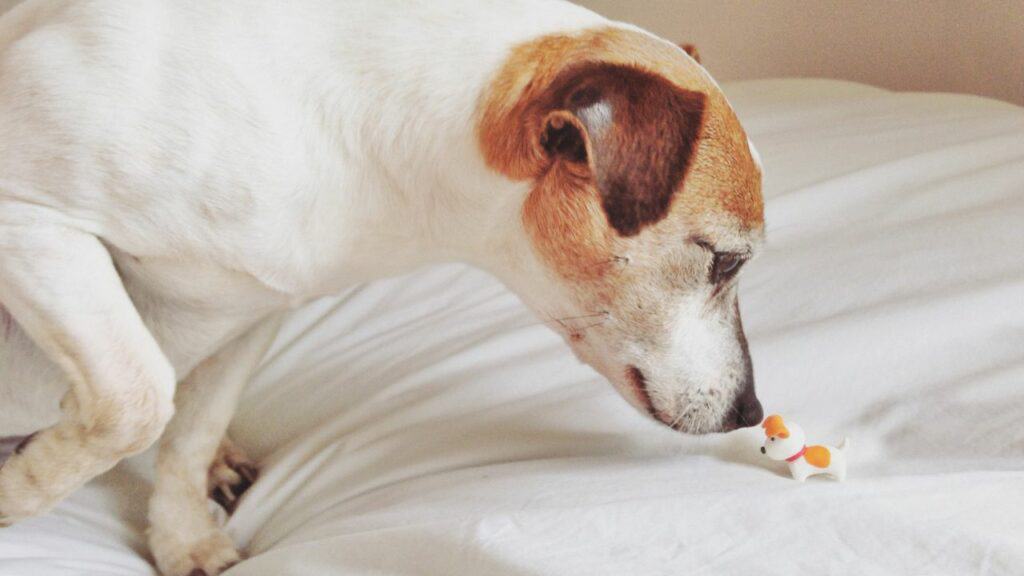
Dogs Can Track Scents Over Great Distances- Even Across Water!
Dogs are remarkable animals with incredible tracking abilities.
They have the capability to track scents over vast distances, even across water!
It’s no surprise that dogs have been an integral part of search and rescue teams for years.
Their enhanced sense of smell allows them to sniff out any target with great accuracy, no matter where it is located.
Some dogs can also use their noses to find out if a person or animal has a health problem, like diabetes or cancer, by smelling it.
These four-legged crime fighters show how effective scent tracking can be when used for the right thing, like finding lost items or missing people.
Before You Go…
Now you know the fun facts about a dogs sense of smell.
If you want to learn more, read the following articles too!

